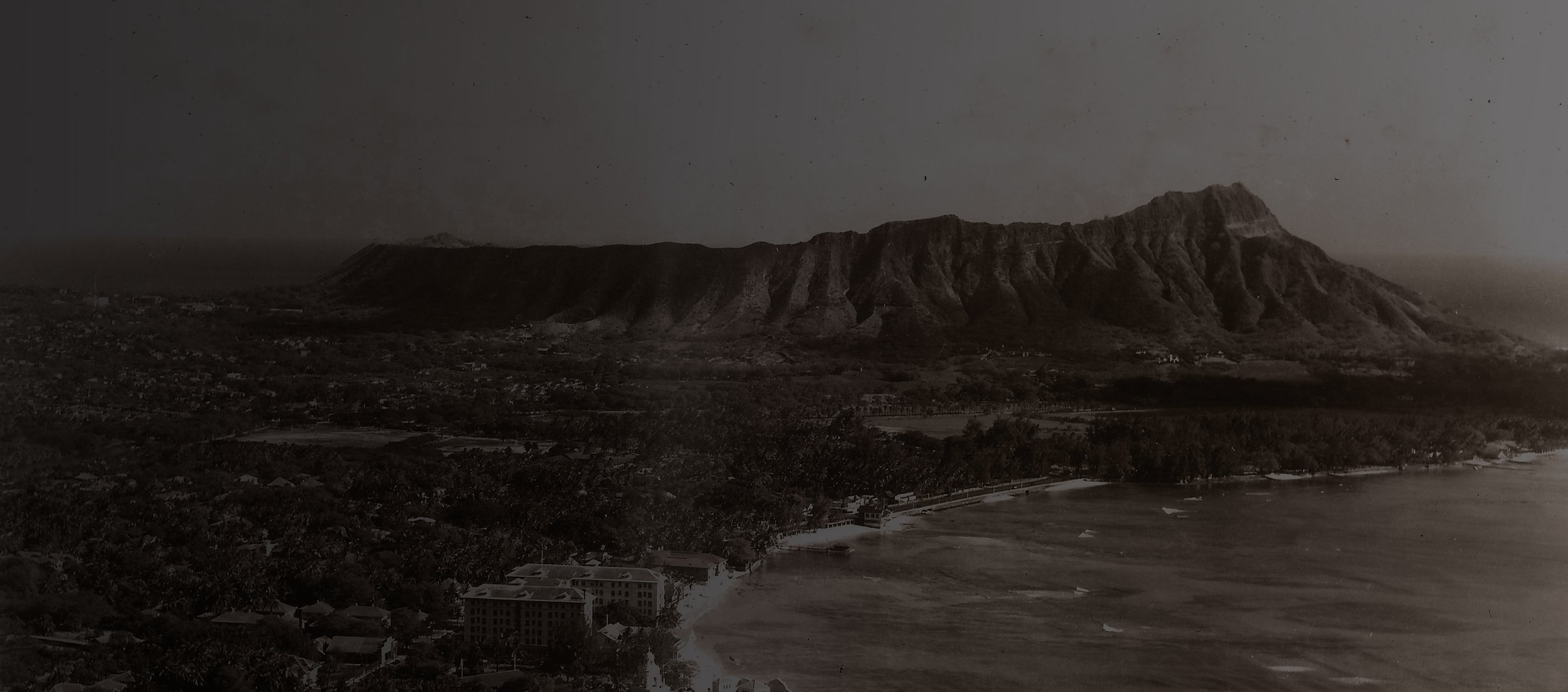
Rainbow Tower & Hilton Lagoon
Sponsored by: Hilton Hawaiian Village
GPS Coordinates: 21.2824°N, -157.8375°W
In traditional times, the coastal plain where you now stand was known as Kālia. Water from streams into the ocean through what is now the world-famous Waikīkī Beach. The Kālia area was served by Pi‘inaio Stream and several freshwater springs. Early Hawaiian farmers developed complex irrigation systems that converted the marshes into lo‘i kalo (taro patches) and loko i‘a (fishponds). Taro is still the staple food and spiritual center for Native Hawaiians. The productive fishponds and the abundant coral reefs meant fresh seafood was always available. Ho‘okipa, the Hawaiian concept of hospitality, maintained that passers-by, whether friends or strangers, were always welcome and fed.
In the early 19th century, social and political fights about Western contact altered the intricate Hawaiian way of life. Foreign diseases and epidemics decimated the native population. By 1866, Mark Twain would note that Waikīkī was a “historic area,” with the remnants of a traditional village site. Over the next century. Waikīkī evolved into a resort area. When industrialist Henry J. Kaiser opened the Hawaiian Village in 1955, the complex of twenty-four thatched roof guest houses featured three ocean water swimming pools and a long house, a common area modeled after Polynesian chiefs’ dwelling.
The Hilton Lagoon was created by dredging and filling what were once mud flats. Bob Paoa, a relative of Duke Kahanamoku, recalls that shrimp were once so plentiful that the people would scoop them up from mudflats with rakes. In 1961, Conrad Hilton acquired Kaiser’s interest in the property and began the expansion of the present-day Hilton Hawaiian Village Beach Resort & Spa. The Barefoot Bar was familiar to Americans who tuned into the television series “Hawaiian Eye.” Its walls and Ceilings were lined with lauhala mats, which were woven from the leaves of pandanus trees. The Hilton’s Rainbow Tower is listed in the Guinness Book of World Records as having two largest murals in the world. Millard Sheets created them in 1968, using over 8,000 ceramic tiles on each mural. The Rainbow Tower offers unparalleled views of Waikīkī Beach and Diamond Head.


